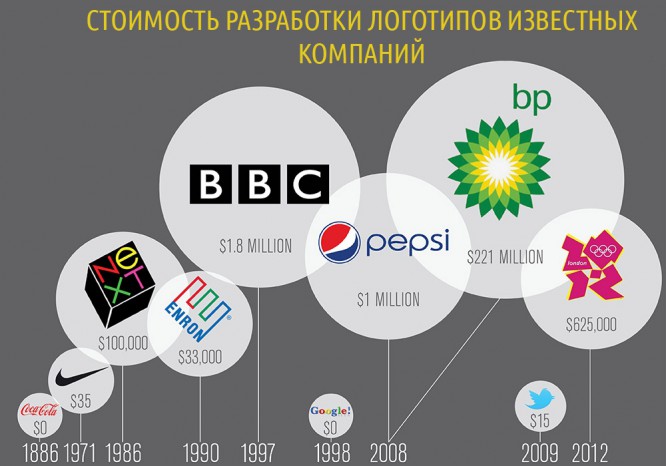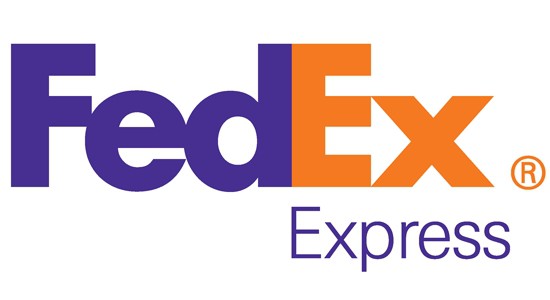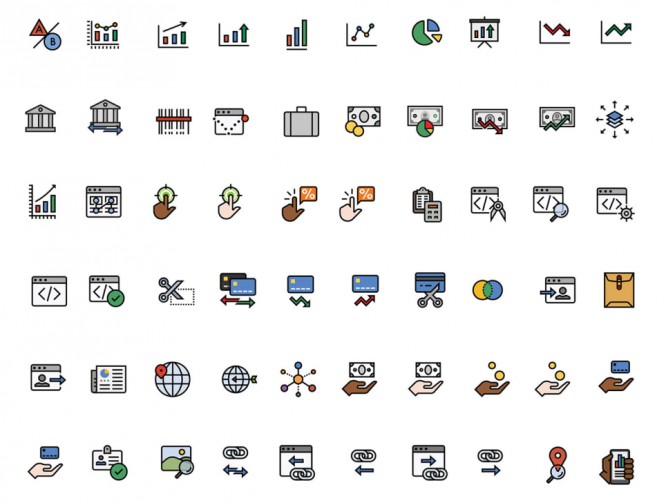10 popular logo design misconceptions
10 popular logo design misconceptions
There are many myths that some entrepreneurs, especially newbies, take as true and thus make mistakes. What are the most common myths when creating logos and how to avoid mistakes – we will talk about this further.
Some of them are relevant even for companies with large budgets. But if you are striving to become a practical entrepreneur and use money wisely, then perhaps this article from Logaster can help you optimize your budget.
Misconception 1: A logo must look cool and expensive
It is not unusual that we all strive for excellence: a quality product, friendly service, an intuitive website design – all this increases the chances of success.
But is it worth it to break down and throw all the resources to create another world masterpiece in graphic design?
Don’t rush to answer. Perhaps you need a logo that works great for your business, sets you apart from the competition, looks decent and doesn’t have to cost you a lot of money?
The success of a logo lies not in the expensive design, but in the quality of the logo creation.
For example, in 1971, Carolyn Davidson, a student at Portland University, designed a logo for an unknown company for a modest fee ($ 35). It was Nike.
Was the development of the Nike logo worth a lot of money then? No. Does it work? Yes.
And there are many such examples.
Don’t believe me? Well, let’s take a look at the cost of designing well-known company logos.

The cost of developing a logo for Coca Cola is $ 0, Nike – $ 35, Twitter – $ 15, but the Pepsi logo cost $ 1 million, and BP’s rebranding – $ 221 million. The cost is different, but all logos are successful in their niche.
Expert opinion

Olga Agafonova, Chief Designer at Ecwid:
There is a funny story about this in the Silicon Valley TV series. The guys wanted a “cool and expensive” logo, but as a result of a series of misadventures, they came up with the simplest version that they could get right away and for free.
Of course, the logo is by no means the main thing, and it does not directly affect the success of the business. You can easily work with no logo at all, or with a very simple logo. However, an unprofessional and sloppy decision can ruin your reputation. So, it’s better without a logo at all than with a bad logo.
Therefore, directly answering the question whether it is worth spending a lot of money on creating a logo at the initial stage of starting a business – no, it is not worth it.
Misconception 2. Success is possible only with quality design
Yes, design is important. For example, 80% of small business owners consider the design of a logo, website, and other elements of corporate identity to be “very important” or “important” to a company’s success. Only 3% think design is not important.
But is it worth relying only on quality design in a competitive race? Hardly. This is just one of the tools. You may be able to grab the customer’s attention, but your company’s long-term success depends on your products, marketing, innovation, etc.
Sagi Haviv says the logo is a simple and functional signpost to help people find and identify your business. But for a logo to be successful, there must be a respected and reliable brand behind it. A logo alone will not make a company successful.
In addition, as sad as it may sound, many companies do not “bother” with the creation of a logo at all.
TJ McCue claims that about 50% of small business owners do not have their own website, they do not have a Facebook page, a LinkedIn profile. But many create a profitable business without an Internet presence and with the help of word of mouth. Some of them have a text logo created by services like Flamingtext. Of course, someday they will be embarrassed to look at their logo and they will change it.
But at the same time, if you have a choice between improving the service, making a profit or taking care of your logo – choose the first two options.
Expert opinion

Nikita Obukhov, founder of Tilda Publishing:
Design, no matter what many conversion and MVP advocates may say, is very important. Another thing is how unusual it should be. First of all, place your stake not on the “effect”, but on the content. Explain in a very simple and neat graphic language who you are, what you offer, and why you are better than others. And then, when you get the first feedback and money, think about the “creative part” of the design.
Misconception 3: I need the most trending logo designs
When you read another article on logo design trends for 201X, you really want to create a logo that will be in the wake of the latest design trends.
But, as he wrote in his book “Logo and corporate identity. Designer’s Guide ”David Airey, when it comes to logo design and corporate identity, trends are best left to the fashion industry.
Trends come and go, and you definitely don’t need to invest a lot of your time and money in a design that will quickly become obsolete.
Durability is paramount, and the logo should last as long as the business it represents. From time to time you can refresh it, clarify some details, but the main idea should remain intact.
Expert opinions

Vladimir Polonik, CEO of the landing page designer Q-page.ru:
Trends are things that come and go. I am sure that the logo is by no means the most important thing in the work of a small company. But for some business niches, the very fact of having a logo can increase the credibility of the company.
Misconception 4: My logo must be no worse than Apple and Starbucks
This is a worthy endeavor, but you are unlikely to be able to repeat the success of well-known companies. Besides, repeating someone else’s concept is not the best choice. To grab the attention of customers, you need to stand out, not repeat other people’s ideas.
Therefore, it will be much more effective to analyze why the logos of well-known companies have become successful and learn from their experience. For example, why the Coca-Cola logo hasn’t changed since 1987, and why the Nike logo is a great example of a strong, memorable logo that’s effective even without color.
Misconception 5. My logo should give everyone an idea of what I’m doing.
This is one of the most common logo design myths.
Most small businesses create a logo that literally depicts the products they sell using overused visual clichés.
How, then, will your business stand out from the competition if every company uses the same idea?
A logo doesn’t have to literally represent what the company does. For example, the Audi logo is not a car at all. And the Hawaiian Airlines logo is not an airplane.
Expert opinions

Olga Agafonova, Chief Designer at Ecwid:
Trying to “explain” everything about your company’s activities with a logo is boring, to say the least. A logo should only reflect what sets your company apart from others. As we remember, the purpose of a logo is to increase the company’s awareness.
Misconception 6: My logo must have a hidden message like FedEx
Yes, it’s a good idea to stand out from the competition and make your logo more memorable. But let’s be honest, has your attitude towards FedEx changed since you learned that there is an arrow hiding between the letters E and X?

Have you started ordering more items on Amazon after you noticed a hidden smile in the form of a line?
Hardly. Because that’s not what matters for the clients. They care about service, affordable prices, product quality. To do this, they will be ready to become a client of a company that may not have a very cool logo.
We do not want to say that your logo should not have hidden elements. But if you do not know how to write them concisely and clearly, do not focus your attention on this. You can always refresh the logo and make an advertising campaign out of it.
Misconception 7. If the logo is liked by the team, so will the customers.
The logo is created for your clients, not for yourself, your colleagues or friends. You must form a clear idea of who your customers are and what they want.
To do this, decide on the qualities of the company that you want to convey to your audience, and try to create a logo that could do this.
Misconception 8: logo first, then sales and branding
What do many aspiring entrepreneurs do when they start a startup? That’s right, they create / order a logo, corporate identity. But at the same time, they spend a lot of effort and money.
Logo making is a creative robot that requires a lot of resources. When you are working on starting a business, it is very important to save your energy and money for product development.
Therefore, perhaps in the early stages of business development, you should focus more on the product and sales.
But this does not mean that you should not have a logo or that it should be of poor quality. There are many ways to create a great logo on a budget. For example, using online logo makers like Logaster, or hiring freelancers.
Misconception 9. A logo is just a company element to create
Many people underestimate the importance of a logo and see it as a picture that needs to be created and placed wherever possible – on a website, in social networks, on a business card, etc. – to be no worse than others.
But the problem is that you need to consider the logo as a tool with which you can benefit (although you should not rely on it 100%).
If your products are good, the prices are reasonable, and in terms of marketing and business you are no worse than other competitors, then a quality logo can distinguish you and attract additional customers.
For example, you buy milk in a supermarket and have settled on two options – one with a logo, the other without. Which packaging will you choose? Under equal conditions (the same prices, volume and percentage of fat content), most likely you will buy milk that has a logo on it. Since the logo is also a symbol of quality, the face of the company. Packaging with a logo is more credible than packaging without it.
Expert opinion

Olga Agafonova, Chief Designer at Ecwid:
The logo does not distinguish it from competitors. The logo increases the awareness of the company. And already the associations that the company will form with its work will “stick” to the logo. Of course, there are theories of color and shape perception that are relevant to logos as to any other graphic object. They are easy to find on the net. However, the reputation of a company has no less influence on the perception of the same sign.
Misconception 10. If I am not good at design, the designer himself will be able to come up with everything right
Logo design is a field of graphic design. But this does not mean that if you do not understand anything about design, then a specialist will do all the work for you and create a working logo.
As a business owner, you need to understand the values of your company and the specifics of the niche in general. For this reason, you should be constantly involved in the design of the logo. A good designer will always ask you a few questions to learn as much as possible about your business, industry, competitors, and you should tell as much as possible about your business vision and company values.
Only when the designer understands for whom the logo is being developed, who it should attract and what information needs to be conveyed, he will be able to translate this into graphics. Naturally, you do not need to be near the developer for days. A constructive conversation should take place when drawing up a technical assignment. It is at this stage that you need to dot all the i’s and give the greatest amount of information about yourself. This is followed by work with clarifications and proofreading.
This way you get a quality logo that works for you.
Expert opinion

Vladimir Polonik, CEO of the landing page designer Q-page.ru:
The designer must understand the needs of both the business and the future customers of that business. He must be able to look at the product both through the eyes of the business creator and through the eyes of future consumers. Moreover, the company will be recognized precisely by the logo, so it will have to be changed much less frequently than the website.
A logo is undoubtedly an important element of a business. But remember that the quality of your product should be at the top of the table, as a quality logo is not enough for business success.
Source: ain.ua
Cover photo: SergZSV.ZP / Shutterstock.com
…


